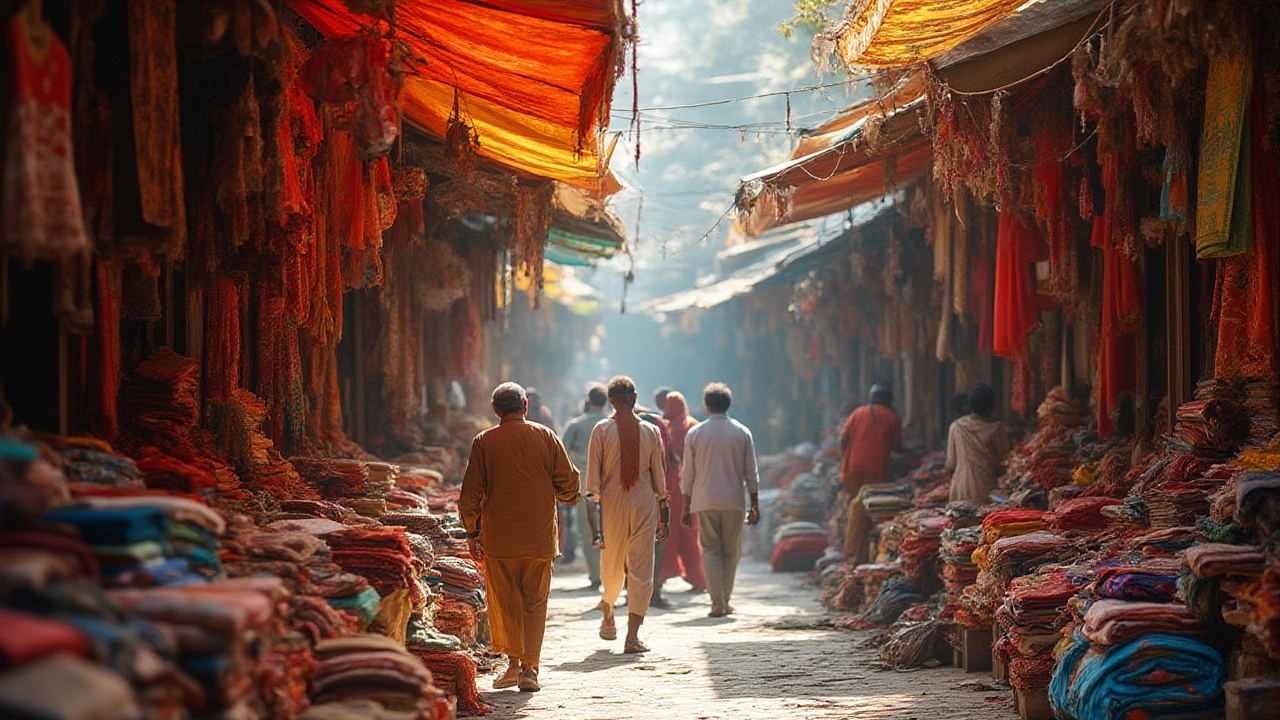India's Textile Market: What You Need to Know
India’s textile market is one of the biggest in the world, and it’s growing fast. From small family shops to huge export giants, the sector touches almost every part of the economy. If you’re curious about where the money is, what’s driving demand, or how you can get involved, you’ve come to the right place.
Why India’s Textile Market Is Booming
First off, the market size crossed $150 billion last year and is expected to keep climbing. A rising middle class, cheap labor, and a strong tradition of cotton farming all feed into that growth. Export numbers are high too – clothing, home fabrics, and technical textiles are shipped to Europe, the U.S., and the Middle East. Smart‑phone‑driven e‑commerce has opened new sales channels, making it easier for even tiny manufacturers to reach global buyers.
Second, the government backs the industry with schemes like the Technology Upgradation Fund (TUFS) and subsidies for power and land. These incentives lower the cost of modern machines and help factories upgrade to more efficient, eco‑friendly processes. The result? Faster production cycles and higher quality output that can compete internationally.
How to Start a Textile Business in India
Thinking of launching a textile unit? The biggest expense is the plant itself – land, building, and machinery can run anywhere from ₹2 crore to ₹10 crore depending on capacity and technology. Cotton spinning and weaving gear costs more than garment stitching machines, so pick the segment that matches your budget and expertise.
Don’t forget about working capital. Raw material (cotton, polyester, dyes) and labor wages take up a big chunk of cash flow, especially in the first six months. A solid business plan that shows projected sales, break‑even point, and loan repayment schedule will make it easier to secure bank financing or attract investors.
Compliance is another piece of the puzzle. You’ll need a Factory License, Pollution Control Board clearance, and registration under the Goods and Services Tax (GST). Many states also offer tax holidays for new textile projects – check the local industrial development corporation for the exact benefits.
Skilled labor can be a bottleneck. While India has plenty of workers, finding people who know how to run modern looms or manage quality control can be tricky. Partnering with local technical institutes or setting up an in‑house training program pays off in the long run.
Power supply is a common headache. Power cuts can stall production and increase costs. Investing in backup generators or solar panels, and taking advantage of the government’s subsidized power rates for textiles, can keep your line running smoothly.
Finally, keep an eye on trends. Sustainable fabrics, smart textiles for wearables, and high‑value technical textiles are gaining market share. If you can add a niche product to your line, you’ll stand out from the sea of generic cotton shirts.

Best Countries for Wholesale Fabric: Top Global Suppliers and Sourcing Tips
Discover the world's top wholesale fabric countries with insider tips, real data, and sourcing tricks for finding the perfect supply partner for your needs.
